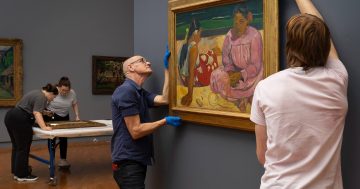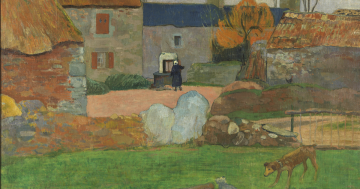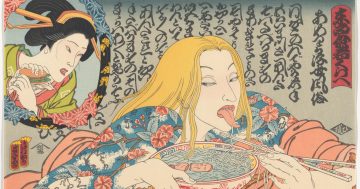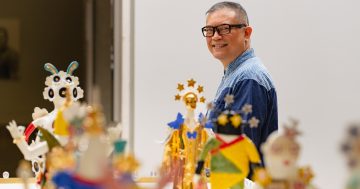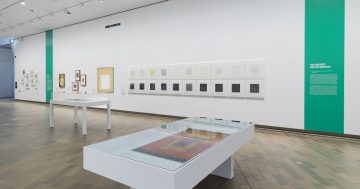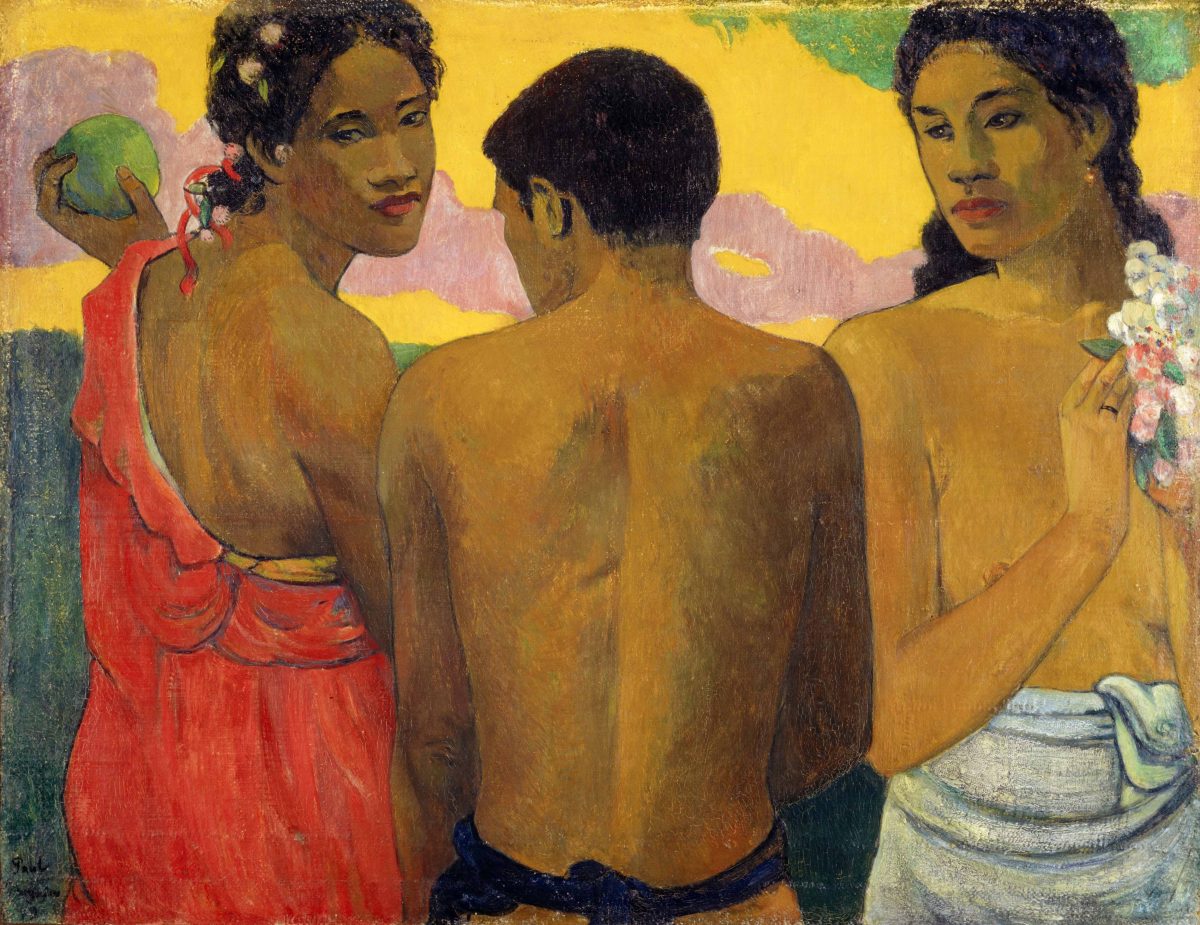
Paul Gauguin’s Three Tahitians (Trois tahitiens) 1899 oil on canvas 73 × 94 cm, National Galleries of Scotland, Edinburgh. Presented by Sir Alexander Maitland in memory of his wife Rosalind 1960, NG 222. Photo: NGA.
Paul Gauguin (1848-1903) is one of the most famous names in French art. He was a pioneering modernist whose primitivist vision, bold symbolic forms and vibrant colours had an impact on many artists, including Henri Matisse and Pablo Picasso.
In more recent times, scholars have uncovered the dark side to Gauguin’s biography – he was a violent man, a paedophile and serial rapist. Having abandoned his wife and five children in Europe, in 1891 he travelled to French Polynesia where he married three girls aged 13 and 14 and had numerous children with them, probably infecting at least some of them with syphilis. He was inspired by phoney notions of ‘the primitive’ – people living naked and in harmony with nature – but instead found that French missionaries had clad and ‘civilised’ the locals. In his life and in his art he went about to unclad them and to plunge them into some quasi-mystical symbolic space living in traditional innocence.
‘Gauguin’s World’ is a large exhibition of about 140 items assembled from 65 public and private collections from around the world by distinguished French curator Henri Loyrette – an outstanding Degas scholar. There is a core of paintings that trace Gauguin’s development from early Impressionist-inspired landscapes through to his later works in Tahiti. This is accompanied by his prints, wood carvings, ceramics, drawings, applied arts as well as cultural items from the Musée de Tahiti et des Îles. It makes for a solid body of work that according to the National Gallery is the largest Gauguin exhibition to be seen in Australia.
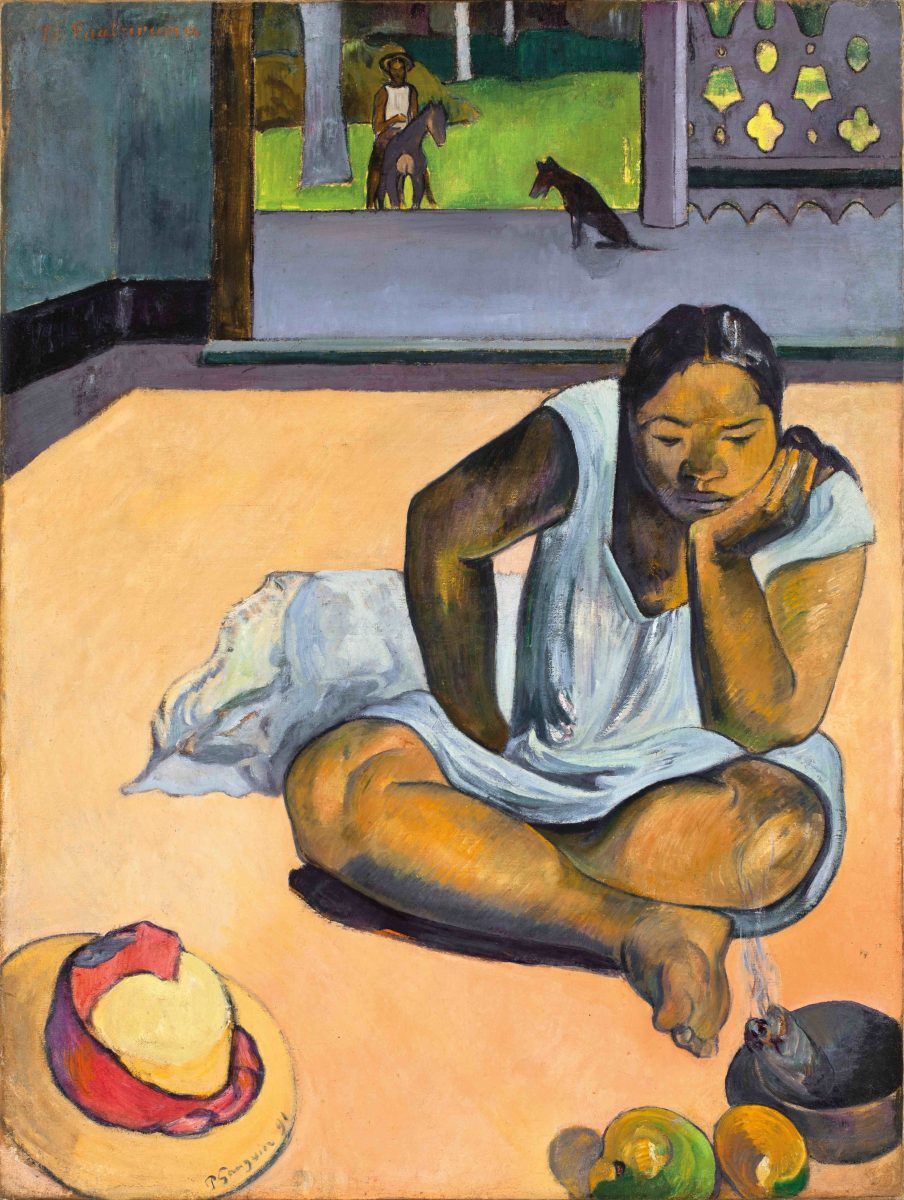
Paul Gauguin, Te faaturuma (The brooding woman), 1891, oil on canvas 91.1 × 68.7 cm Worcester Art Museum. Museum Purchase, 1921. Photo: NGA.
Gauguin’s Te faaturuma (The brooding woman), 1891, is characteristic of the language that the artist established in Tahiti with a pensive, scantily clad young native girl seated in the foreground before a bowl with burning incense while a strange vista opens up in the background.
In another painting, Three Tahitians, 1899, a bare-chested youth, with his back to us, is flanked by two Tahitian maidens, one of whom is stripped to her waist, and they offer the youth fruit and flowers. In the paintings, a dream-like atmosphere prevails, while the colours are vibrant and seem to radiate heat. Space is generally flattened creating the impression of a rich surface tapestry where forms, colour patches, symbolic gestures and suggestive glances all play a role.
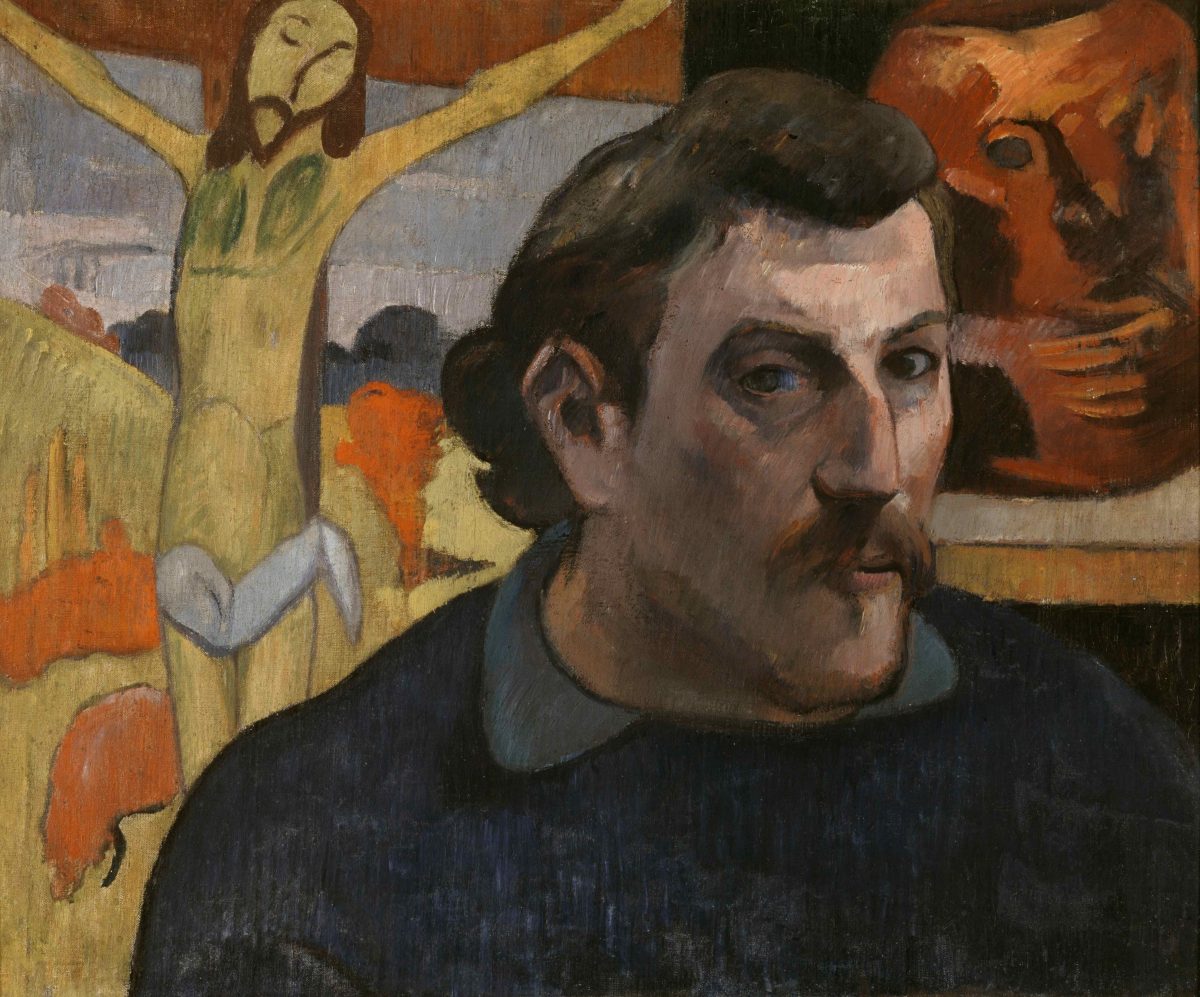
Paul Gauguin’s Self-Portrait with the Yellow Christ (Portrait de l’artiste au ‘Christ jaune’), 1890–91, Musée d’Orsay, Paris, purchased with the participation of Philippe Meyer and Japanese sponsorship coordinated by the daily Nikkei 1993. Photo: GrandPalaisRmn (musée d’Orsay) / René-Gabriel.
In a number of the paintings, Gauguin’s own coarse features crop up, as in his Self-Portrait with the Yellow Christ, 1890–91, from the Musée d’Orsay in Paris. The artist seems eager to stamp on images his identity and presence as well as to record his place in art history. Gauguin came to art indirectly. Early in life he was selling French tarpaulins in Denmark and subsequently worked as a stockbroker in Paris and – having failed in both pursuits – he started dabbling in art. He was essentially self-taught, but mixed in the company of artists, especially Camille Pissarro, Paul Cézanne, Edgar Degas and Vincent van Gogh. His meteoric and idiosyncratic path as an artist and his quest to introduce the primitive, savage and ritualistic magic into his art proved popular with subsequent generations of artists and patrons.
Gauguin died aged 54 and left a divided legacy. Many admire his art, his technical innovations and his independence of thought as an artist. His violence against women, his paedophilia and such pronouncements that women ask to be raped, make him into something of a pariah on the international art scene. It is a disingenuous defence to argue that what Gauguin did in the 1890s and the opening decade of the 20th century was alright then but is wrong by today’s standards. His behaviour towards women was always wrong and reprehensible and, going on his charge sheet, he should have been locked up and the key thrown away.
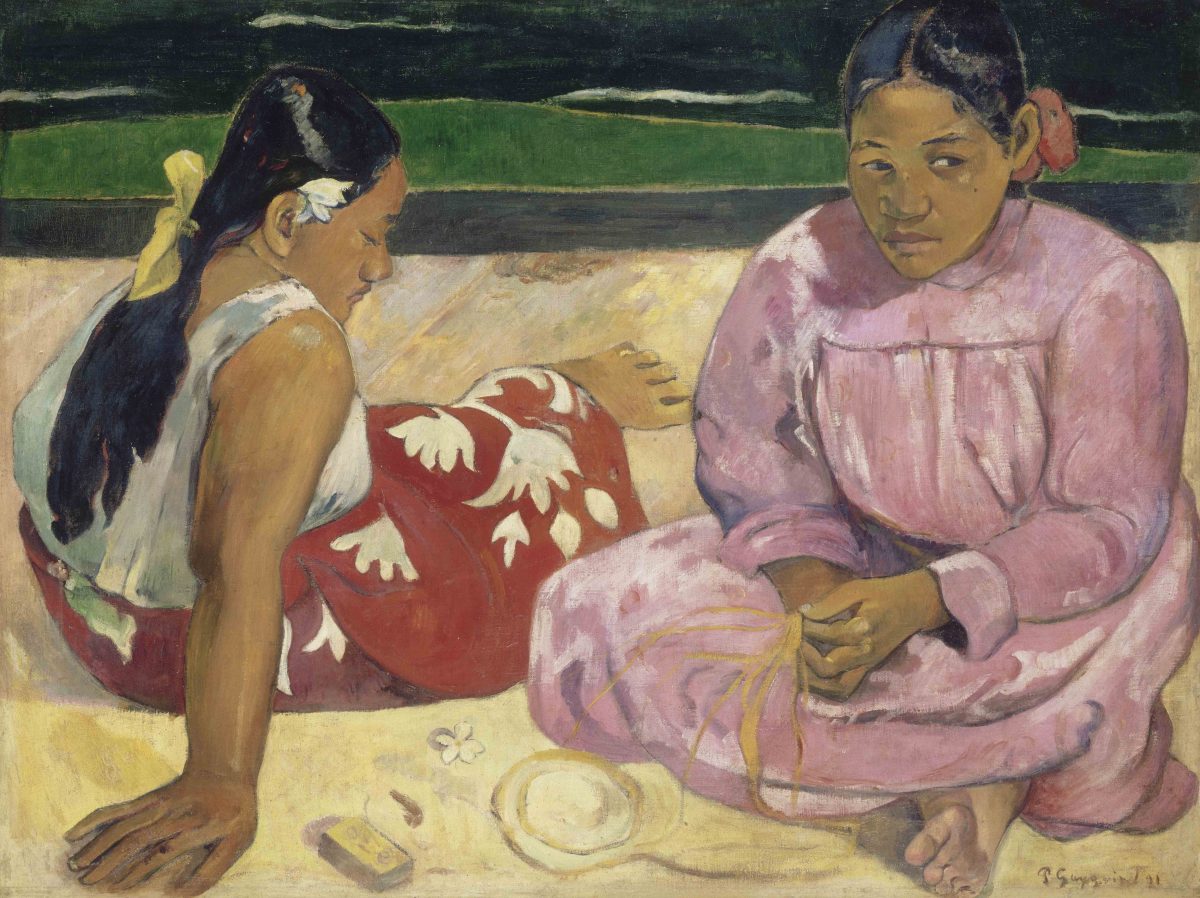
Paul Gauguin’s Tahitian women (Femmes de Tahiti) 1891 oil on canvas 69 × 91.5 cm, Musée d’Orsay, Paris. Gift of Countess Vitali 1923, RF 2765. Photo: NGA.
Gauguin’s World is a controversial show and no amount of whitewashing and expressions of homage to Tahitian culture will erase the stain. It will be interesting to see how audiences vote with their feet. It is a good show of Gauguin’s art, however it is made by an evil man whose actions need to be condemned. People will have to decide whether Gauguin’s art should be celebrated or condemned and ignored.
Gauguin’s World: Tōna Iho, Tōna Ao is open at the National Gallery of Australia from 29 June – 7 October 2024. Admission charges apply.













